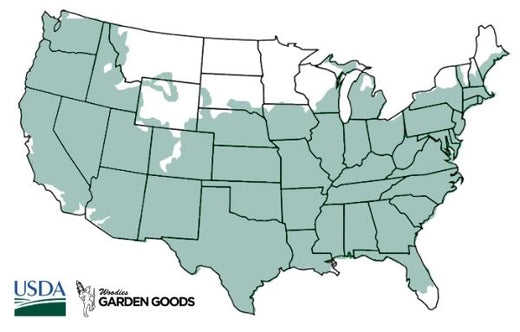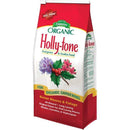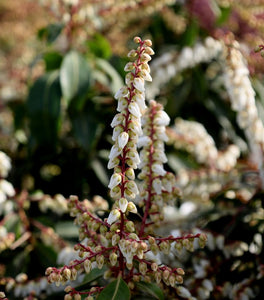Shrubs such as Leucothoe Rainbow grow best if they are fertilized once in the spring. Leucothoe Rainbow favors nutrient rich soil and ample fertilization. When selecting a fertilizer for your Leucothoe Rainbow, use a balanced fertilizer blended specifically for shrubs such as Espoma Holly Tone for example its also a good idea to acidify the soil using Espoma soil acidifier once a year to maintain a "sour" environment for your azaleas. See "Using coffee grounds with your Leucothoes" further down this page. Our ideal fertilizer schedule for Leucothoe Rainbow is to apply an early spring fertilizer with a product such as Espoma Tree-tone or Plant-tone at the recommended rate this will give the plant a boost of nitrogen that will be needed for healthy abundant foliage. Follow this up with a early summer application of Espoma Holly-Tone, this will provide the necessary nutrients and raise the acid level in the soil which Leucothoe favor. Espoma products are easy to use, just sprinkle around the base of the plant and water it in. Be careful with products such as miracle-grow as these products can burn newly planted plants when not used at the recommended rates. Slow-release fertilizer can help prevent rapid sucker growth that is vulnerable to diseases and insects. Either chemical fertilizers or organic matter can be used successfully. Since an organic method of applying manure and/or compost around the roots, produces excellent results and also improves the condition of the soil, this would be an excellent first line of attack. Organic additions to the soil can also be combined with a shot of chemical fertilizer for maximum effect. If chemical fertilizers are used on your Leucothoe Rainbow, applying a slow-release, balanced fertilizer once a year in the spring is probably the simplest solution. There are many slow-release fertilizers on the market. If you can find a fertilizer formulated for acid loving shrubs and trees, this fertilizer would work well on Leucothoe Rainbow. However, slow-release is certainly not the only way to fertilize Leucothoe Rainbow although truth be told I feel its the best. A less expensive fast release fertilizer such as a 15-15-15 will work just as well if applied twice during the growing season in the spring and again in mid summer. If you are looking for a fertilizing routine tailored to your specific conditions, a soil sample should be taken and the fertilizer and trace elements matched to the needs of your soil. Don't fertilize Leucothoe Rainbow after August in the North. Fall is the time for Azaleas to begin preparing for dormancy. Fertilizing at this time may stimulate new growth that will be too tender to withstand the winter. In the South, a late summer into September application would be about right. As mentioned one spring application of a balanced fertilizer should more than suffice. The amount of chemical fertilizer used per plant will vary with the size of the plant and it's root system. Over-fertilization can be much more detrimental than under-fertilization especially on leucothoes. "Fertilizer burn" can occur when too much fertilizer is applied, resulting in a drying out of the roots and damage or even death of the rose.It is much, much better to err on the side of too little fertilizer than too much. When roots are burned, the first sign is often scorched looking leaves. If over-fertilization is severe, the plant may just wilt and die. Leucothoe Rainbow is very easy to grow however it may be helpful to know that a very small plant which is planted in the ground will take about 1/8 - 1/4 cup of espoma organic holly-tone fertilizer. When fertilizing Leucothoe Rainbow in containers, be careful to apply a fertilizer that will not burn the roots (such as a slow release or a liquid fertilizer). A very large shrub azalea in the ground will take 2 - 3 cups spread around the drip line of the branches (not next to the trunk). This is a very loose estimate, so please read the directions on the fertilizer before applying it. Never fertilize a plant with a chemical fertilizer if the plant looks sick or wilted. If a plant is struggling due to a disease or root problems, the fertilizer will only add stress to it's life. Try to cure the problem before adding fertilizer. For a totally organic approach, many gardeners use commercial manure on the soil around Leucothoe such as Leucothoe Rainbow. Excellent results have been reported by visitors to this site after using composted manure. Commercial manure or compost can be applied yearly around the base of the Leucothoe. As with chemical fertilizers, do not apply it right next to the trunk or stems emerging from the ground. Leucothoe Rainbow thrives in soil with a pH from 4.5 to 6.0. Soil should drain well, because waterlogged conditions encourage disease development and may result in plant drowning. When soil pH rises and become too alkaline, leucothoes cannot absorb adequate iron and experience chlorosis, or yellowing of plant tissue due to poor nutrient intake. Although Leucothoe prefer acid-forming fertilizers, such as 15-5-15, blindly applying fertilizer to unchecked soil may result in disaster.

![Leucothoe Girard's Rainbow Hardiness Zones 5-9]()















